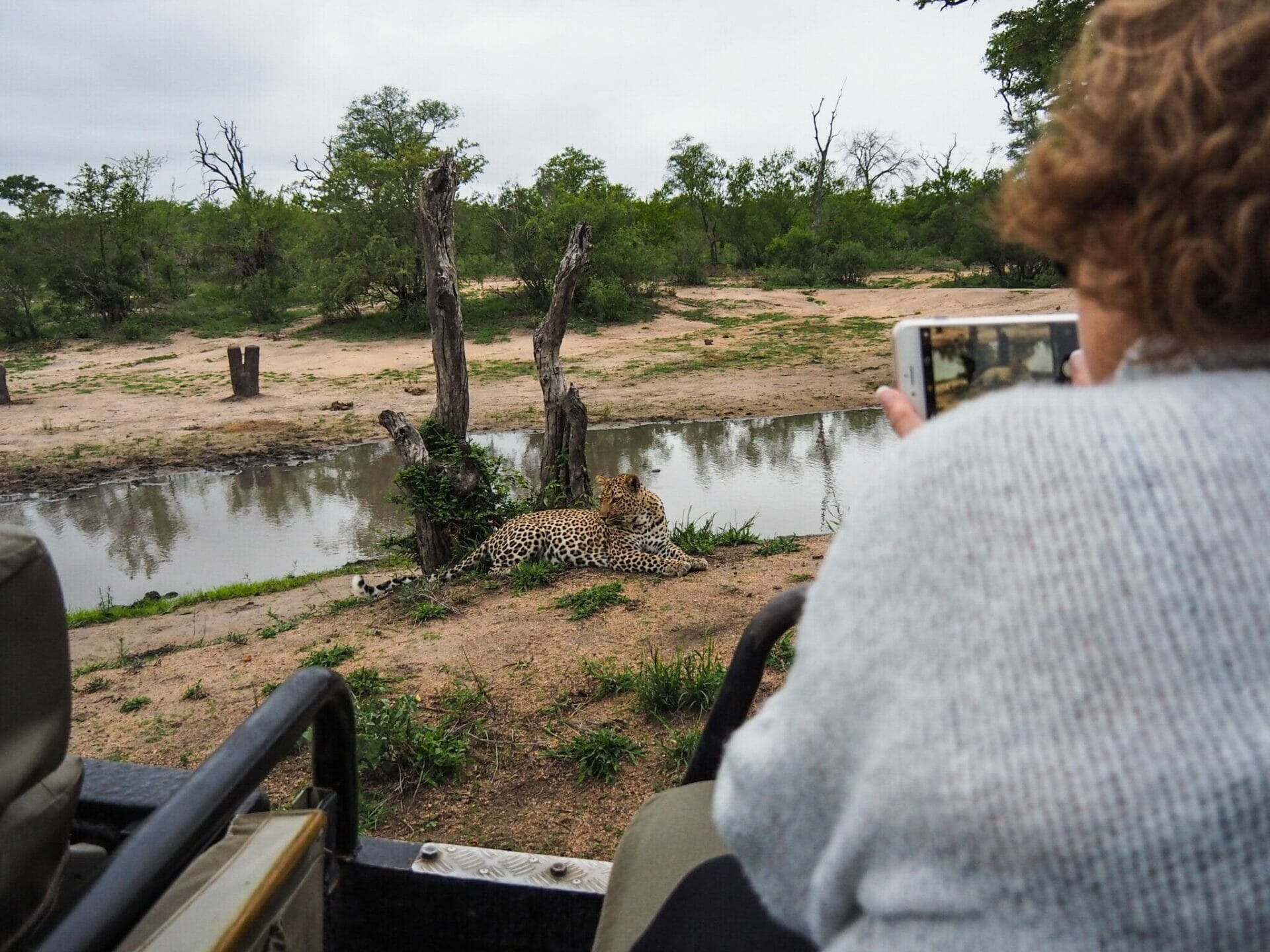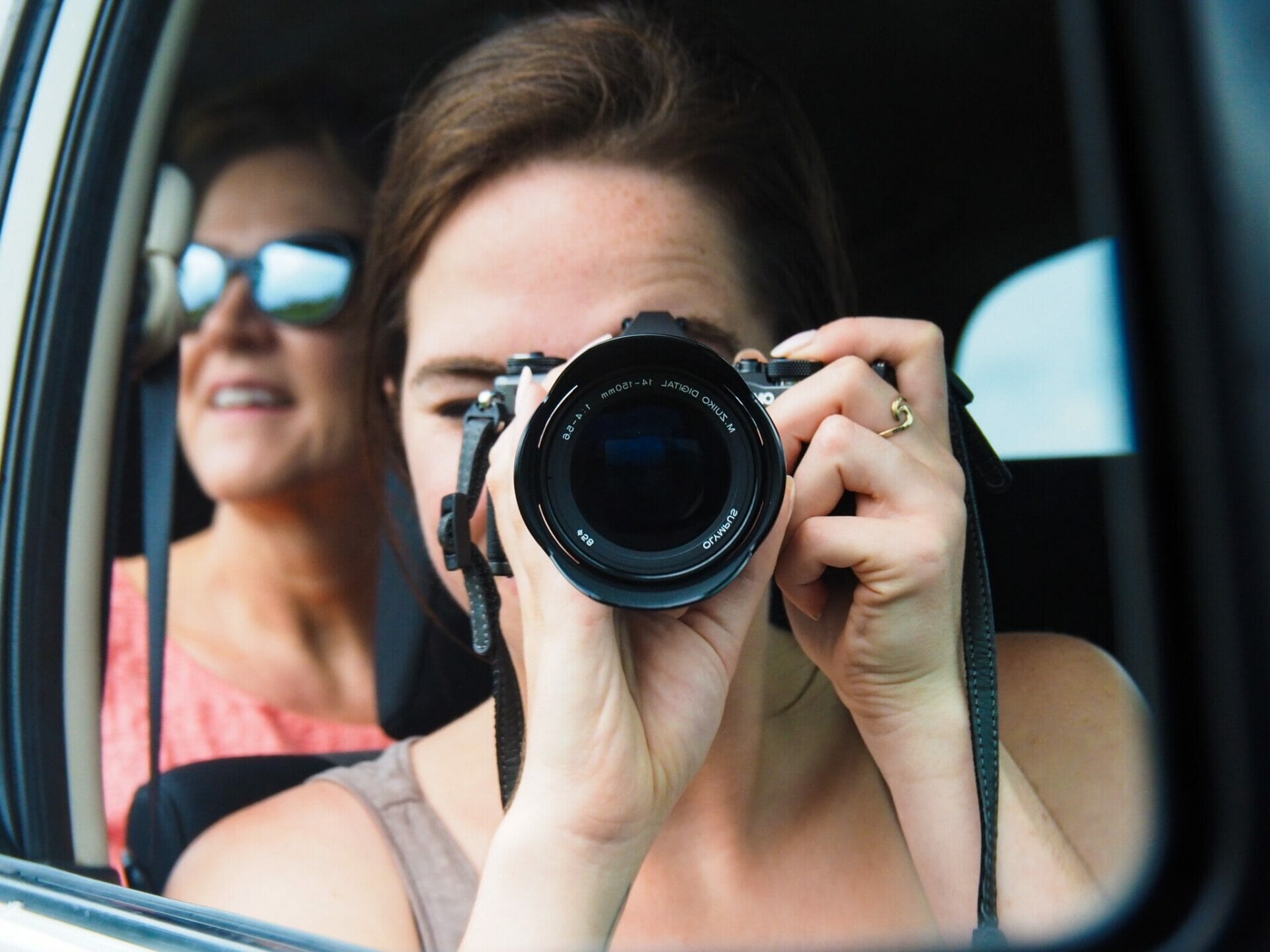
Last Updated on 5 June 2022
Going on safari has always been a huge bucket list item of mine, but, after some truly indescribable experiences on a South African safari a few weeks ago, I don’t think I even want to completely tick it off the list— I want to come back and do it all over some day. However amazing this experience was, though, it was still quite a challenge to plan for, especially considering all the options in terms of different parks, types of game drives, accommodation… It was truly overwhelming. After having a private guide through Kruger National Park, staying in a luxury safari lodge in Sabi Sands Private Reserve, and self-driving through Addo Elephant National Park, I finally feel that I understand at least a little bit about the available options, and hopefully am able provide some useful information on how to plan your own safari in South Africa. This guide will give you an overview of all your options for an amazing safari in South Africa, plus my tips and recommendations.
For more safari photos, see my daily posts from each of the following parks below or, for a specific comparison on all 3 parks we visited and our experiences there, you can read this post.
Posts about Kruger National Park
Posts about Sabi Sands Private Reserve
Post about Addo Elephant National Park

Where to go on safari?
Probably the biggest decision to make regarding your safari is what park you will visit, or maybe even more so what type of park. In South Africa, there are a number of national parks that are all owned and operated by SANParks (the SA government) and there are also some small private reserves.
National Park
As the national parks are all government owned (e.g. Kruger), the options cater to a far broader range of travellers: you can stay in your own tent, a glamping tent with little cots and perhaps power, stay in a range of rondavels that usually have private bathrooms, or you can even stay outside the park in a hotel or guesthouse and drive in each day. SANParks operate a number of rest camps within the park where you can find this type of accommodation, and I would definitely recommend staying inside the park as it saves you a fair bit of driving each day, plus the gate between the rest camp and the park opens an hour earlier than the gate between the park and the outside area, so you have extra time with the animals before the rush. Entrance to the national park itself is usually about $20-35, so it would be possible to keep costs incredibly low depending on where you want to stay and how you want to do your safari. Within the national parks, you can also choose to self-drive, join one of the group safari drives departing from a rest camp, or hire a private guide to take you around in their car. There are definite benefits to all of these options, which I outlined in this post, but it’s really all personal preference.
Private Game Reserve
In staying at a safari lodge within a private reserve, all your game drives will be included, as well as your food, in paying for your room. The accommodation is extreme luxury and the cost definitely reflects that, but you will be treated to a pretty phenomenal experience that makes it well worth the investment. It is not possible to stay outside the reserve and drive in on your own, or even with a private guide, so all your guides will be with rangers and trackers that work at the particular lodge and will be on their schedule. Unlike the larger national parks, private reserves allow rangers to drive off road to get closer to animals, so we found that our sightings were much closer and more intimate. The animals within the reserves are also very familiar with the shape and sound of the vehicles, so they just view you as a large, non-threatening animal and are unbothered by your presence.

What kind of safari?
If you are staying in a private game reserve for your safari, the only option will be to join the morning and evening game drives offered by the lodge, but spending time in the national parks offers several options: self-drive through the parks in your own car, join one of the group drives departing from the rest camps, or hire a private guide.
Self-drive
We self-drove through a SANPark in the Western Cape just for the day and found it incredibly exciting, but with its own downsides. While you have all the freedom in the world to do whatever you want and only need to pay the park entrance fee and car hire costs, you likely aren’t an experienced animal tracker or an expert on African wildlife. It’s easy enough to drive through the parks, but if there’s something you really want to see, you may not know where to look, how to react if your vehicle is surrounded by a herd of elephant (which happened to us), or even what exactly you are looking at.
Private tour
We had a private guide for a few days in Kruger and found her extremely helpful. We spent all our time staring out the window and taking photos while she did the navigating and planning, taking us to the areas she thought we’d be most likely to find animals. The cost certainly wasn’t ridiculous, so it was well-worth the expertise and also the responsibility that the guide took in our experience.
Group safari
Within the national parks, you can also join safaris through the SANPark rest camps. They are not too expensive, but you’ll be plunked in with a group and taken around to see whatever rather than specifically what you want to see. Still, the guides are experienced and able to share facts about the animals and fauna you are passing.

How many days do I need?
Safari can be an exhausting experience— we were in the car at 430am in Kruger and at 530am in Sabi Sands. While it was well-worth the early mornings, it’s still not something you want to (or need to) be doing for weeks on end. We evenly split 5 days between a national park and a private reserve, then spent another half-day self-driving through a national park, and found this time to be more than sufficient to see everything we wanted to see. You may find that both the other places you want to fit into your itinerary and the cost of the safari make much of the decision for you.
What does a safari cost?
It’s difficult to comment too concretely on the cost of a safari in SA, as it varies considerably based on a dozen factors, but if you were looking for the most budget option possible, I’d recommend self-driving through a national park and either camping at one of the SANPark rest camps within the gate or upgrading to a rondavel. Expect to pay about $50/day, varying depending on the car and time of year, for a rental vehicle in South Africa, then another $20-35 in park entrance fees per day, and then the cost of accommodation. For those looking for more luxury, definitely go to a private reserve. Expect to pay anywhere from $1000-4000 per night with all food, drinks, and drives included, but know that it is well worth it. For the perfect mix of both, do what we did and visit both for a couple days!
When to go on safari?
We embarked on our South African safari in summer, around mid-December. This is high season (not peak season), so prices were suitably inflated, but the weather was surprisingly cooperative. In many parts of SA, summer is the wet season, so you may be subjected to sudden downpours and some overcast days, but we were quite lucky just to get a little cloud cover that kept our days quite cool. At night, it is still reasonably warm, but the morning drives can be a touch chillier. Not having been on safari in winter, I can’t really comment too much on the best time to go, but let me just say that we were perfectly happy with our December safari and certainly wouldn’t have traded it.
What to pack for a safari?
Possibly the single biggest challenge in the planning of our safari, though, was just knowing what to bring. All over the internet, there are lists of very safari-specific items, like khaki shorts and cargo vests, but for the most part it’s just not necessary. Keep colours neutral to avoid startling the animals and attracting bugs, but you likely have a number of grey or muted tones already in your wardrobe that are perfect. Here is a list of items that I brought, plus or minus those I wish I had and those that were not needed.
- Tank tops/t-shirts, look for grey, green, or other light colours
- At least 1 lightweight button-up shirt for blocking sun and bugs, maybe in a nice green
- Warm jumper for early morning drives, not too brightly coloured
- Rain jacket
- Shorts/skirts, preferably something stretchy or at least not so restricting that you’d be uncomfortable sitting for 10 hours
- At least one pair of pants, possibly a pair of grey tights or khaki/tan pants
- Runners, you won’t really need boots because you’ll be in the car all day
- A nice-ish outfit to wear to dinner, just a long skirt and tank top or a summer dress would be plenty
- Sunnies, a good hat, and sunscreen for the open-air vehicles
- Bug spray, use in the early mornings and evenings
- Your camera with a good lens (I used 28-300mm and found it to be plenty, despite other articles online), spare memory card and batteries, camera bag
- Swimsuit, as most of the safari lodges and even SANPark rest camps have pools
I relied heavily on blog posts when I was planning my own safari, so hopefully this guide provides similar help to other travellers! Of course, I am still far from an expert, but post any questions and I’ll do my best to answer them below. Happy travelling!

Read more about our South African safari
SOUTH AFRICAN SAFARI DAY 1: BLYDE RIVER CANYON & KRUGER NATIONAL PARK
SOUTH AFRICAN SAFARI DAY 2: SATARA REST CAMP, KRUGER NATIONAL PARK
SOUTH AFRICAN SAFARI DAY 3: FROM KRUGER NATIONAL PARK TO SABI SANDS GAME RESERVE
SOUTH AFRICAN SAFARI DAY 4: ARATHUSA SAFARI LODGE, SABI SANDS
SOUTH AFRICAN SAFARI DAY 5: OUR LAST DAY IN SABI SANDS
PHOTO JOURNAL: HIGHLIGHTS FROM MY FIRST SOUTH AFRICAN SAFARI
